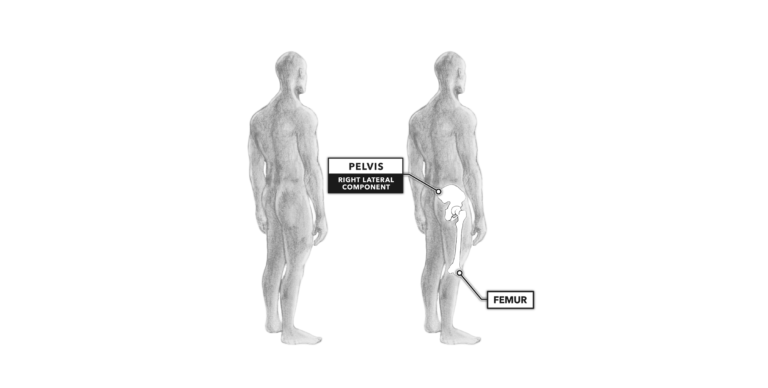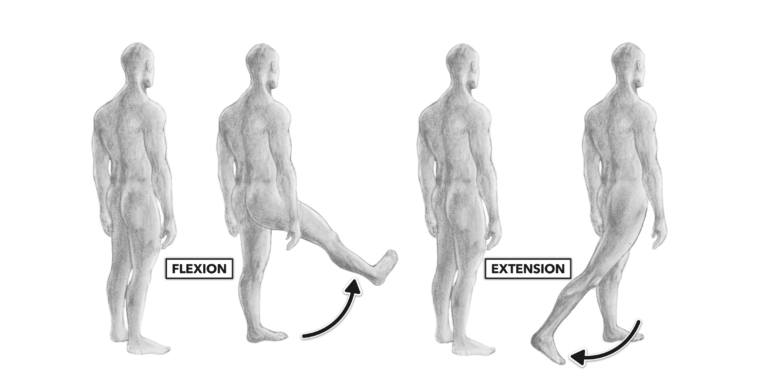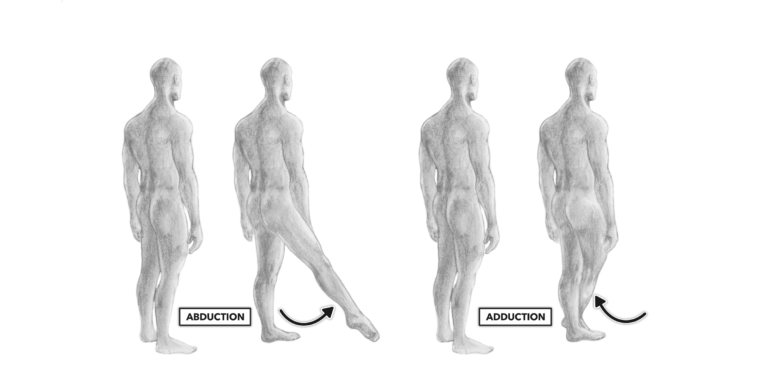The hip is the most powerful joint in the body due to its heavy musculature, robust architecture, and large range of motion. The bony structure of the pelvis creates the foundation for the hip joint. The pelvis is oriented in mirror images to the left and right sides of the vertebral column, creating a right hip and a left hip. Each hip articulates the femur—the bone of the upper leg—and the pelvis (Figure 1). Most of the significant movements in human life, including sitting, standing, walking, running, and lifting, involve architectural contributions at the hip.
The structure of the hip allows a wide range of motion to (and between) the extreme ranges of anterior, posterior, medial, and lateral movement. Raising the leg toward the front is termed flexion; pushing the leg toward the back is termed extension (Figure 2). An easy way to differentiate between flexion and extension at the hip is to think of a book: Opening it is extension, closing it is flexion.
Swinging the leg away from the body laterally (to the side) is termed abduction. Pulling the leg toward or across the body is adduction (Figure 3).
Rotation of the femur head in the hip joint allows us to point our toes at any point along an arc enabled by the rotational flexibility of the hip (Figure 4). This movement ability allows us to adjust our foot position relative to the body vis-à-vis pointing the toes in or pointing the toes out.
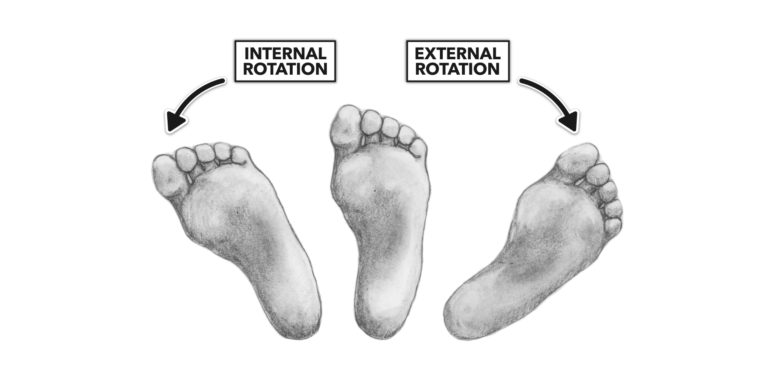
Figure 4: Internal and external rotation of the femur head in the hip allows the toe to point in various directions along an arc.
Combining flexion, extension, abduction, adduction, and rotation into a compound movement is called circumduction (Figure 5). Circumduction can create large or small arcs of movement, large or small circles of movement, large or small ellipses of movement, etc. Circumduction allows us to use the legs to move and manipulate our bodies or other objects into nearly infinite positions.
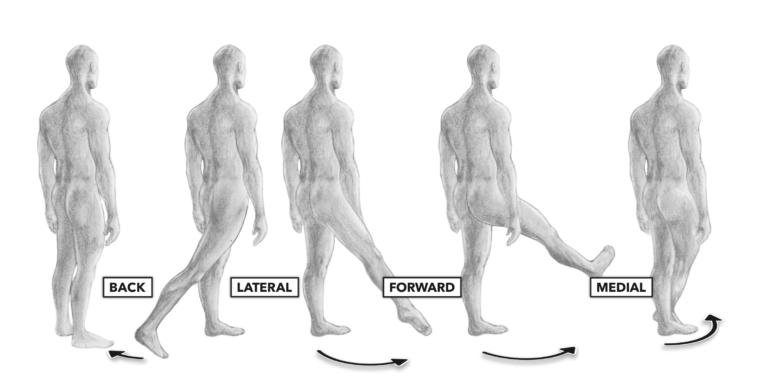
Figure 5: Circumduction refers to compound movements of the hip.
